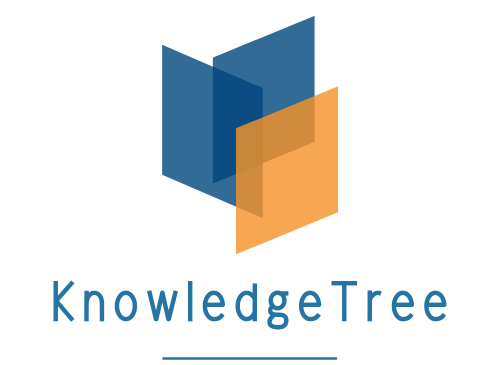“Efficiency is doing things right; effectiveness is doing the right things.”
– Peter Drucker, father of modern management theory
In other words, just because you CAN do something, does that mean you SHOULD? And what SHOULD you be doing anyway? ‘Sales efficiency’ and ‘sales effectiveness’ sound like vague concepts, but they can actually have a significant impact on the success of your sales strategy.
The 2015 MHO Best Practices Study reveals that “having a strategy and knowing the right things to do [is] a huge differentiator between top performers and others”.
Sales Efficiency and Sales Effectiveness – What Do They Mean?
You probably hear the terms ‘sales efficiency’ and ‘sales effectiveness’ tossed around fairly often in the office or on the sales floor, but what do they really mean? As mentioned earlier, ‘sales effectiveness’ refers to what particular tasks are performed with the ultimate goal of driving revenue, while ‘sales efficiency’ refers to how those activities are completed. In short, effectiveness is the quality of the actions, while efficiency is the speed of the actions.
Relating the two terms is ‘sales productivity’, which is the ratio of the outputs obtained (effectiveness) versus the inputs invested (efficiency). In sales terms, your output could be the number of calls you make or demos you set in a day, whereas inputs could be the time you spent on those activities. Based on this definition, if you can achieve more with less effort, then productivity increases.
Let’s face it – time is a finite and often very valuable resource. And sales organizations are increasingly chasing more aggressive goals with greater pressure to over-achieve. If you can improve sales productivity, then why wouldn’t you?
A Few Key Stats
First let’s take a look at a few key stats about sales efficiency and effectiveness in B2B businesses:
- Sales productivity is the #1 challenge for 65% of B2B organizations (The Bridge Group)
- 2/3 of sales reps fail to meet quota (Aberdeen)
- Most sales reps spend the equivalent of at least 50 full days away from core selling activities each year (Domo)
- 44% of sales executives think their organization is ineffective at managing the sales pipeline, yet companies with effective pipeline management grow 15% faster (Vantage Point Performance)
What Does It Mean to be Inefficient or Ineffective?

An inefficient, ineffective sales process can cost businesses millions of dollars in lost revenue each year, according to a recent survey by Adobe. One of the most common sources of inefficiency and ineffectiveness in the sales organization is related to content.
Inefficiency occurs two ways: sales reps are not able to find content (in fact, it takes 18 minutes on average to find each piece of content) or sales reps recreate or make their own content. According to Halsey Griffith, mid- to large-size organizations can waste $2.5-$3.5 million annually on sales reps performing these two activities, which adds up to $113.4 billion annually, nationwide.
Ineffectiveness occurs when reps blindly send content to prospects and customers without knowing what works and what doesn’t or without tailoring content based on the persona or sales situation. And when 65% of B2B buyers make a purchasing decision based on vendor content (DemandGen), there are definitely missed sales opportunities.
How Can I Improve Sales Efficiency and Sales Effectiveness?
A 2013 survey from Accenture and CSO Insights indicated that 75% of CSOs were targeting at least 5% annual revenue growth. However, to successfully achieve this growth, there needs to be an increased focus on selling efficiency and effectiveness, both within the sales organization and across the enterprise.
Step 1: Identify the right sales process
First comes improving effectiveness. As Albert Einstein says, we can’t keep doing the same thing over and over again and expect different results each time. Tamara Schenk asserts, “It cannot be emphasized often enough that questioning the current state is a fundamental sales leadership approach to developing high-performance sales teams”.
To improve effectiveness, sales leaders need to outline a consistent sales process and then set sales objectives around those activities or related to specific sales goals. Companies that follow a defined workflow are 33% more likely to be high performers.
Step 2: Give sales reps the proper training
Less than 45% of companies have a formal sales training process. However, continuous training can yield up to 50% higher net sales per sales rep. As a sales leader, you may know what needs to be done, but your sales team may not know how to execute. The fact that 87% of training content is forgotten within weeks just reinforces the need for ongoing coaching and training.
Tools such as sales playbooks allow sales leaders to provide their teams with just-in-time coaching and best practices to ensure they have what they need to further the deal. Information such as talk tracks, training materials, kill sheets, and persona-based selling tips can be instantly accessible to reps for any given sales situation.
Step 3: Optimize these activities
After identifying which processes are effective, you can work on improving efficiency by optimizing those activities. According to a 2015 study from Aberdeen, investing in sales analytics and forecasting solutions is directly correlated to better sales and business-wide performance results.
Organizations that use sales analytics increase team quota attainment 4x faster than non-users. Best-in-class sales leaders are open to ongoing analysis, learning, and adjustment. It’s important to use KPIs and metrics to determine what works, what doesn’t work, and areas for improvement in terms of factors such as speed, accuracy, and quality.
Consider metrics such as call rate, win rate, sales cycle length, pipeline conversion rates, and average number of touches until conversion. Use dashboards to visualize trends and gain valuable insights into sales rep activity.

A modern selling strategy requires modern sales tools, such as sales enablement technology. A solution such as KnowledgeTree aims to align marketing and sales processes and goals and then arm sales teams with the tools and content to improve sales execution and drive revenue.
Sales enablement, by nature, empowers and enables sales reps to work more efficiently. And remember, a more efficient and effective sales team means more revenue is being generated!
The benefits of having an efficient and effective sales process are worth the effort. You can shorten the sales cycle, close more deals, increase sales productivity, get back more core selling time, and enforce best practices that help your entire sales team be top performers.

